 |
 |
 |
| |
Macroeconomic assessment of overall and per-patient healthcare costs of
Hepatitis C-infected patients in an integrated health system
in the era of direct-acting antiviral therapy
|
| |
| |
EASL 2022 June 22-26 London
David E. Kaplan1,2, Claire Durkin1,2, Marina Serper1,2
1 Research Section, Philadelphia VA Medical Center and 2 Division of Gastroenterology and Hepatology, Department of Medicine, University of Pennsylvania, Philadelphia, PA
----------------------------------
EASL: REAL-WORLD VALUE AND INNOVATION OF DIRECT-ACTING ANTIVIRALS FOR THE TREATMENT OF CHRONIC HEPATITIS C AT Kaiser PERMANENTE SOUTHERN CALIFORNIA - (06/23/22)
CONCLUSION
Based on this modeling analysis, treating patients with DAAs resulted in a reduction in HCV-related morbidity and mortality and significant improvement in QALYs. Furthermore, use of DAAs was dominant (less costly and more effective) as compared to no treatment offering cost-savings within 3 years post-treatment. These findings highlight the substantial value of DAA treatment offered to HCV patients in the KPSC healthcare delivery system.
--------------------------------------
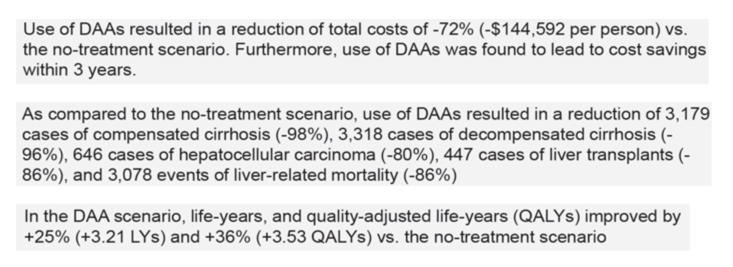
During fiscal year 2010, 214,531 unique infected individuals were under care. By 2020, only 68,086 HCV-infected patients did not have documentation of SVR12 (Left).
• Total cost expenditures prior to DAA availability ranged between $5.3-5.8B then peaked at $9.0B in FY2015 due to massive increases in pharmacy-related costs then declined to below pre-DAA levels by FY2020
(Middle).
• Total cost per-patient under care approximated pre-DAA levels after 5 years; a modest decline in outpatient and inpatient expenditures was observed FY2019-2020 (Right).
• These data suggest that reductions in overall healthcare costs for the VA hepatitis C-infected population cannot be observed until 4-5 years after increased access due to extended time to treat all patients
• Early reductions in total cost may be related to patient attrition from care after SVR12 with a later decline in per-patient costs.
• Data suggest that universal DAA will be cost-saving after 5-year time horizon from payor perspective.
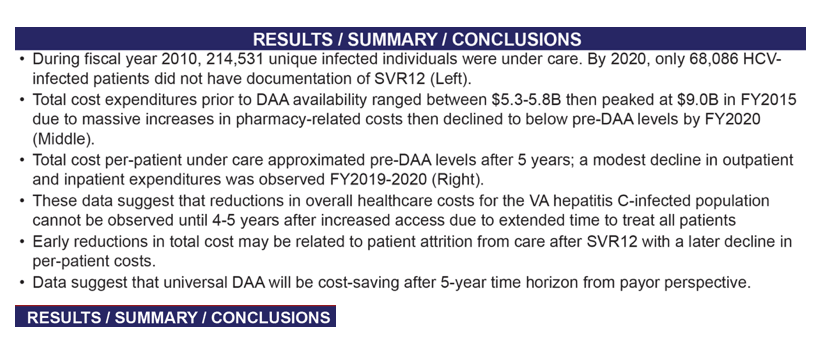
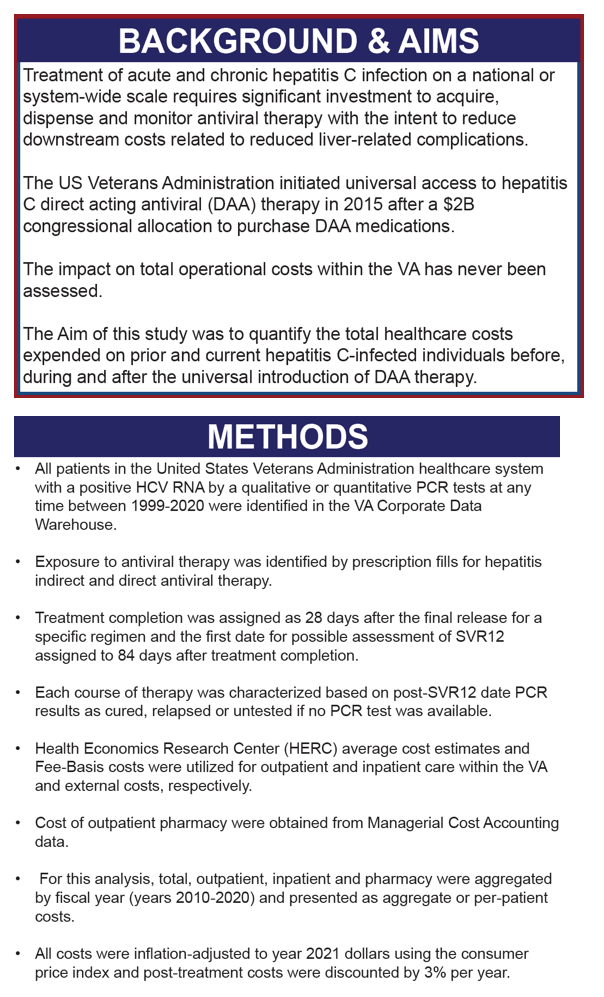
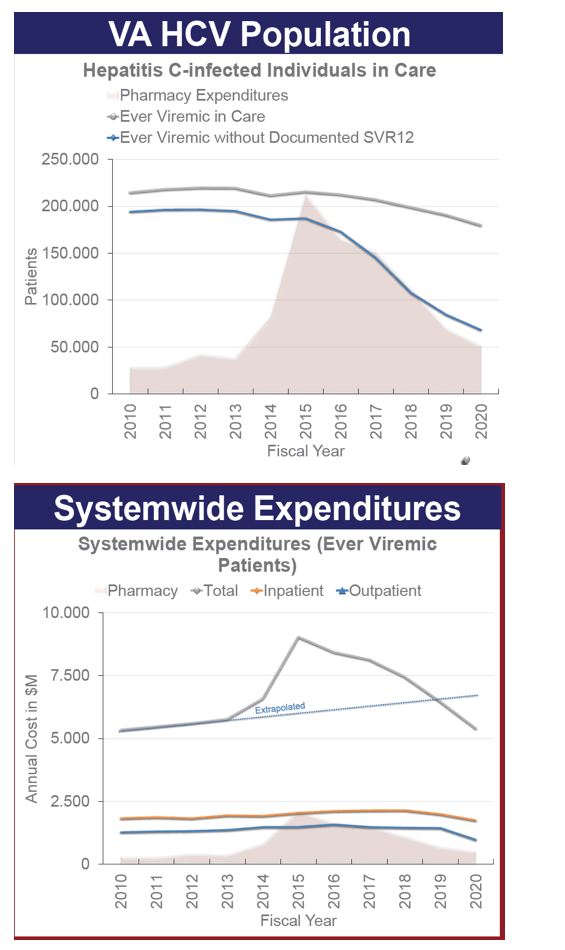
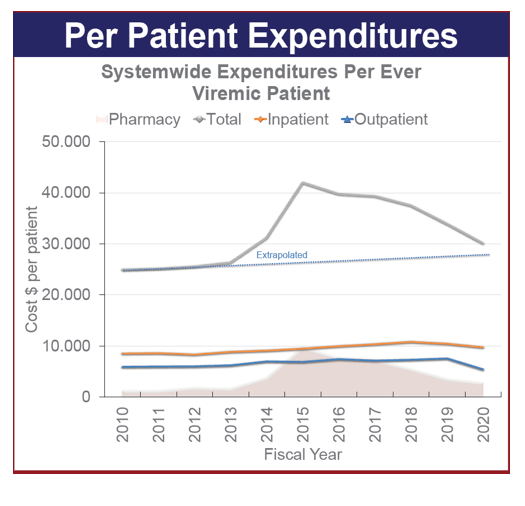
|
| |
|
 |
 |
|
|